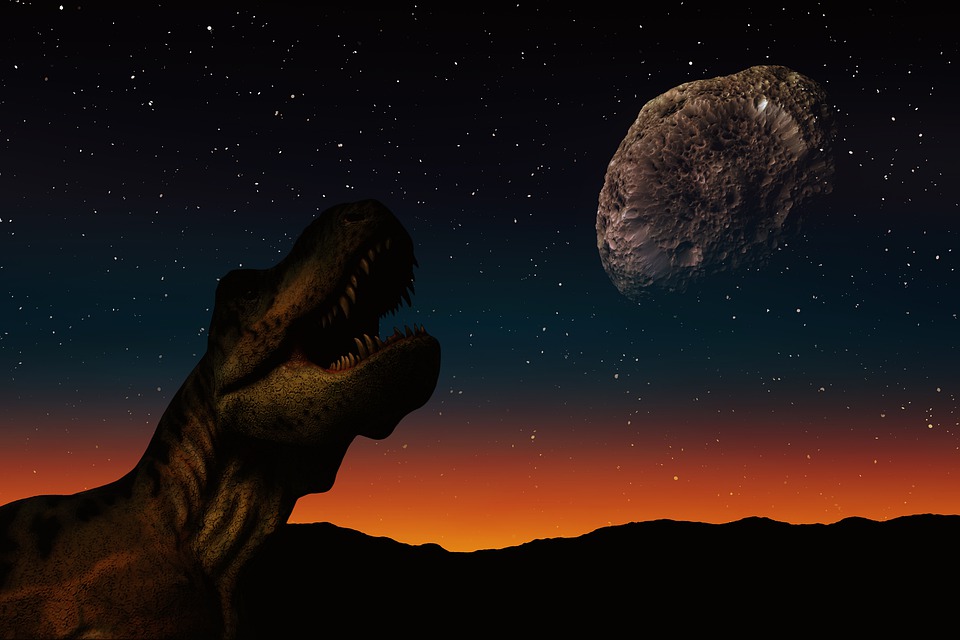The dinosaurs are known to have gone extinct due to an asteroid collision millions of years ago. And although chances of an asteroid strike such as that are very slim, it is still possible, especially as NASA recently tracked down a potentially hazardous asteroid that is moving Earthbound.
Express reports that the agency has kept tabs on this particular asteroid that is coming in for a close approach. The rock is formally known as 1998 OR2 and is moving towards the Earth’s orbit at a speed of 31, 320 kilometers per hour. NASA predicts that it will be approaching Earth by the 29th of April. OR2 measures somewhere between 1.5 kilometers and 4.1 kilometers, and thus it is classified as a Potentially Hazardous Object or PHO aside from being a Near-Earth Object or NEO. This would be the second sighting of the space rock as it was first spotted by NASA back in 1987.
As OR2 is labeled potentially hazardous, the consequences should the asteroid collide with Earth will be on a global scale. Large asteroids such as that one can trigger natural calamities such as tsunamis and earthquakes. Entire cities or civilizations could be wiped out in case the asteroid does not fall into the water. It bears noting that the asteroid that killed the dinosaurs was measured at 10 kilometers in diameter.
Fortunately, by the time OR2 approaches the Earth, it will only pass by the planet. The closest the asteroid will get to the Earth is at a distance of 0.04025 astronomical units or 6.29 million kilometers away. It may be extremely far away, but it is close enough to be detected.
Meanwhile, an astronomer discovered an exoplanet that can potentially be inhabited. A student from the University of British Columbia, Michelle Kunimoto, was studying data from the agency’s Kepler space probe. Upon closer study, she found that among the 17 exoplanets that the Kepler space probe discovered, one exoplanet has the same size as that of Earth. According to Kunimoto, the planet she found was located 1,000 light-years away. “But this is a really exciting find since there have only been 15 small, confirmed planets in the Habitable Zone in the Kepler data so far.”



 Astronomers have discovered another puzzling interstellar object − this third one is big, bright and fast
Astronomers have discovered another puzzling interstellar object − this third one is big, bright and fast  NASA Faces Major Workforce Reduction as 20% of Employees Prepare to Leave
NASA Faces Major Workforce Reduction as 20% of Employees Prepare to Leave  Tabletop particle accelerator could transform medicine and materials science
Tabletop particle accelerator could transform medicine and materials science  Trump Administration to Launch Autism Initiatives Targeting Acetaminophen Use and New Treatment Options
Trump Administration to Launch Autism Initiatives Targeting Acetaminophen Use and New Treatment Options  FDA Pilot Program Eases Rules for Nicotine Pouch Makers
FDA Pilot Program Eases Rules for Nicotine Pouch Makers  SpaceX Starship Explodes in Texas During Test, Citing Nitrogen Tank Failure
SpaceX Starship Explodes in Texas During Test, Citing Nitrogen Tank Failure  SpaceX’s Starship Completes 11th Test Flight, Paving Way for Moon and Mars Missions
SpaceX’s Starship Completes 11th Test Flight, Paving Way for Moon and Mars Missions  NASA Astronauts Wilmore and Williams Recover After Boeing Starliner Delay
NASA Astronauts Wilmore and Williams Recover After Boeing Starliner Delay  Ancient Mars may have had a carbon cycle − a new study suggests the red planet may have once been warmer, wetter and more favorable for life
Ancient Mars may have had a carbon cycle − a new study suggests the red planet may have once been warmer, wetter and more favorable for life  Trump Signs Executive Order to Boost AI Research in Childhood Cancer
Trump Signs Executive Order to Boost AI Research in Childhood Cancer 































